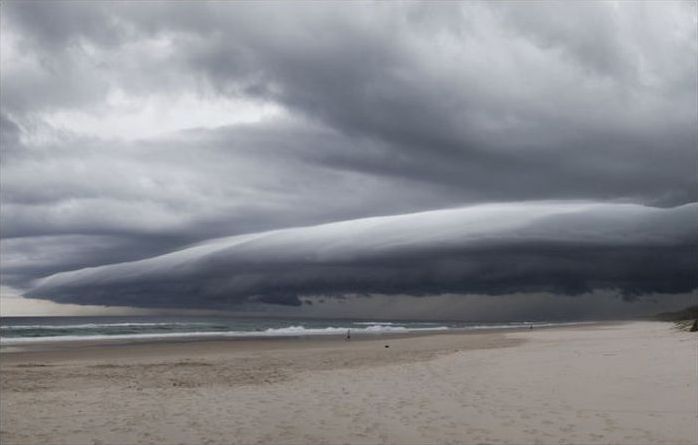|
|
Clouds Formation
|
Cirriform-category clouds form mostly at high altitudes along the very leading edges of a frontal and/or low pressure weather disturbance and often along the fringes of its other borders. They are generally non-convective but occasionally acquire a tufted or turreted appearance caused by small scale high altitude convection. These high clouds do not produce precipitation as such but can merge and thicken into lower stratiform layers that do.
• Families and cross-classification into genera
The individual genus types result from the physical categories being cross-classified by height range family within the troposphere. These include family A (high), family B (middle), family C (low), family D1 (moderate vertical with low to middle bases), and family D2 (towering vertical with low to middle bases). The family designation for a particular genus is determined by the base height of the cloud and its vertical extent. The base height range for each family varies depending on the latitudinal geographical zone.
Families A and B: All Cirriform-category clouds are classified as high range family A and thus constitute a single genus cirrus (Ci). Cumuliform and stratiform-category clouds in the high altitude family carry the prefix 'cirro', yielding the respective genus names cirrocumulus (Cc) and cirrostratus (Cs). Similar genera in the middle range family B are prefixed by 'alto', yielding the genus names altocumulus (Ac) and altostratus (As).
|
|









